This blog post forms part of History Day 2021, a day of online interactive events for students, researchers and history enthusiasts to explore library, museum, archive and history collections across the UK and beyond.
Use the Archives Hub, a free resource, to find unique sources for your research, both physical and digital. Search across descriptions of archives, held at over 370 institutions across the UK.
This year’s History Day is themed ‘environmental history‘, so we’re showcasing a range of archive collections relating to nature, landscape, climate change and more.
Nature
Yorkshire Wildlife Trust Archive, 1933 onwards: The Trust was established in 1946 to receive the gift of two plots of land at Askham Bog, York. The land had been purchased in 1944 by prominent confectioners and keen naturalists Sir Francis Terry and Arnold Stephenson Rowntree, following the earlier unsuccessful attempt of the Joseph Rowntree Village Trust to acquire the site at auction. Today, the Trust is one of a national partnership of 47 Wildlife Trusts across the whole of the UK, the Isle of Man and Alderney, and cares for over 100 nature reserves throughout Yorkshire. Held by the Borthwick Institute for Archives, University of York – see full collection description.
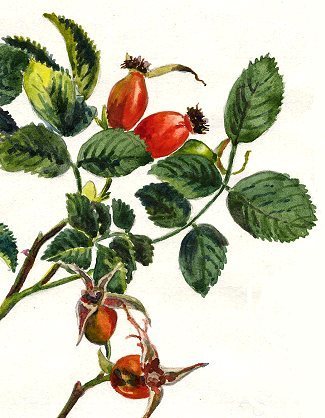
“Wild Rose haups. Rosa Canina. Sidlaw Road, Strathmartine. September 1912”. Detail from Illustrations of Scottish Flora (1912-1913) by David R Robinson. From the Kinnear Collection, reference GB 0254 MS 103/3/5. Photograph copyright © University of Dundee Archive Services.
Feature: Botany – botany and botanists (March 2005).
Ida Margaret Hayward Collection: Ida was born in 1872 to a family very much connected to the cloth industry. After her father died, she and her mother went to live near her mother’s family in Galashiels in the Scottish Borders where her uncles owned the woollen mills of Messrs. Sanderson. It was noticed by one of her uncles, William Sanderson, that many of the seeds brought in with the wool imported from Australia, New Zealand and South America survived the treatment process and went on to germinate on the banks of the Tweed. Encouraged by him, Hayward set about conducting a thorough study of this alien flora. She jointly published “The Adventive Flora of Tweedside” in 1919. Ida was elected a Fellow of the Linnean Society in 1910 and the Botanical Society of Edinburgh in 1913. Before her death in 1949, she donated her herbarium of adventive (alien) plants to the Royal Botanic Garden Edinburgh, along with her scrapbook and letters relating to the Flora. Held by Royal Botanic Garden Edinburgh Archives – see full collection description.
Online Resource: Historical UK Tide Gauge Data (19th and 20th Century): this collection offers registered users the chance to search UK sea level records, including some of the UK’s earliest recorded sea level data from Sheerness – a port on the Isle of Sheppey in Kent. Records available include several large datasets of tide gauge charts and ledgers from around the UK. Resource is provided by the British Oceanographic Data Centre:
https://archiveshub.jisc.ac.uk/data/gbah5-historicaluktidegaugedata.
Stopes (Marie) Papers: Marie Stopes was educated in Edinburgh and London. She obtained a first class honours degree and was a gold medallist at University College London. She studied for her Ph.D. in Munich. Marie was the first woman to be appointed to the science staff of the University of Manchester in 1904. She went to Japan on a Scientific Mission in 1907, spent a year and a half at the Imperial University, Tokyo, and explored the country for fossils. She specialised in coal mines and fossil plants. She founded, jointly with H. V. Roe, the Mothers’ Clinic for Constructive Birth-Control, 1921 (the first birth control clinic in the world). Marie was President of the Society for Constructive Birth Control and Racial Progress. She was also Fellow and sometime Lecturer in Palaeobotany at University College London and Lecturer in Palaeobotany at the University of Manchester. She published many books, mainly concerning botany and birth control. Material held by University College London Archives – see full collection description.
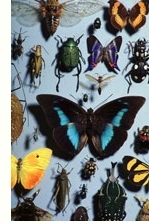
Image of butterflies: courtesy Museum of Natural History, University of Oxford.
Feature: Insects and Entomologists, enthusiasts and biologists, entomologists and zoologists (March 2006).
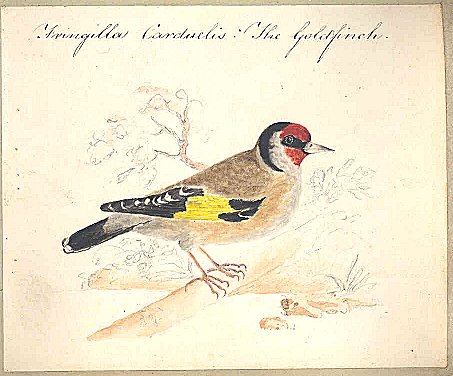
“Fringilla Carduelis. The Goldfinch”, from the Bird Book. Image courtesy of the University of Exeter Library Special Collections.
Feature: Ornithology, scientists, enthusiasts, and illustrators (May 2003).
Landscape
Papers of Sir Robert Hunter, Solicitor and Co-founder of the National Trust: Robert Hunter was in South London in 1844. He took his degree at University College, London. In 1867 he was appointed solicitor for the Commons Preservation Society and was instrumental in the preservation of Wimbledon Commons and Epping Forest among other open spaces. In 1876 he wrote a competition essay for the Commons and Footpaths Preservation Society on the means of preserving common lands for the enjoyment of the public. This was chosen as one of six to be published. In 1882 he became Chief Solicitor to the Post Office but continued to advise the Commons Preservation Society. In 1894 he was knighted for services to the open space movement. Coupled with the work of Canon Hardwicke Rawnsley in the Lake District, Hunter’s influence led to the foundation of the National Trust for Places of Historic Interest or Natural Beauty. Material held by Surrey History Centre – see full collection description.
Papers of Sir Charles Lyell (1797-1875): influential geologist, fellow of the Royal Society; these papers include notes on the New Zealand earthquake of 1856. Charles Lyell was born at Kinnordy, near Kirriemuir in Angus, in 1797. During his lifetime he wrote many geological papers, mainly published by the Geological Society of London, however his reputation rests almost entirely on his work Principles of Geology. In this work, Lyell propounded his theory of uniformitarianism, which holds that the Earth’s history is explained by gradual change over time, and that geological processes going on today (like erosion) have occurred in the past and have shaped the Earth’s surface, and this had a strong influence on Charles Darwin. In 1828 he explored the volcanic region of the Auvergne, then went to Mount Etna to gather supporting evidence for the theory of geology he would expound in his Principles of Geology. The collection is held by Edinburgh University Library Special Collections – see full collection description.
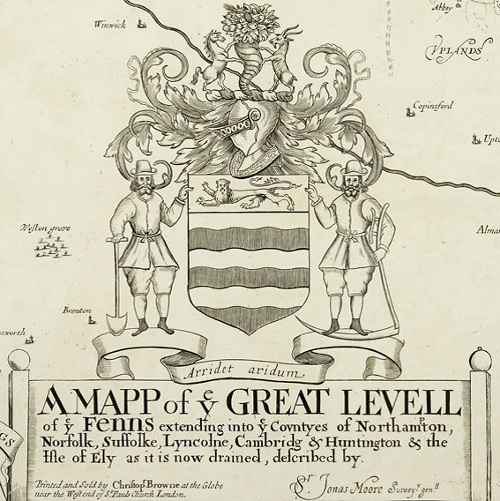
Cartouche from Moore’s Mapp of the Great Levell of the Fenns re-printed in 1706 [R59/31/40/13/1]. Image copyright: Cambridgeshire Archives.
Feature: Silt, sluices and smelt fishing – The Eau Brink Cut and the Bedford Level Corporation Archive (July 2018).
Climate change
G.S. Callendar Archive, 1930-2003: In the first half of the twentieth century, the carbon dioxide theory of climate change had fallen out of favour with climatologists. Beginning in 1938, Guy Stewart Callendar (1898-1964), a noted steam engineer and amateur meteorologist, revived this theory by arguing that rising global temperatures and increased coal burning were closely linked. Working from his home in West Sussex, England, Callendar collected weather data from frontier stations around the world, formulated a coherent theory of infrared absorption by trace gases, and demonstrated that the carbon dioxide content of the atmosphere, like the temperature, was indeed rising. Although he was an amateur meteorologist, Callendar worked on a truly global scale, compiling a reliable world data set of surface temperatures from earliest times and insisting – long before it became fashionable to do so – that climatology must deal with physics and atmospheric dynamics. Just before the beginning of the International Geophysical Year in 1957, Hans Seuss and Roger Revelle referred to the ‘Callendar effect’ – defined as climatic change brought about by anthropogenic increases in the concentration of atmospheric carbon dioxide, primarily through the processes of combustion. Collection held by the University of East Anglia Archives – see full collection description.
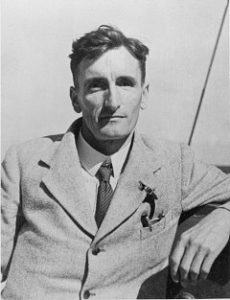
Guy Stewart Callendar (1898-1964)
Photo courtesy of the G.S. Callendar Archive, University of East Anglia.
Feature: Seeing the light: G.S. Callendar and carbon dioxide theory of climate change (November 2007).
Records of the Geological Society of Glasgow, learned society (1858 onwards): The Geological Society of Glasgow was founded in 1858. The Society aims to gain an understanding of the study of the earth through excursions and lectures, and is still active to this day. The Society’s early contribution to geological research includes, fossils, an understanding of Scotland’s glacial history, geological time and the relationship between climate change and the Earth’s rotation. Famous 19th and early 20th Century Presidents include Lord Kelvin (for 21 years), Sir Archibald Geikie, Charles Lapworth, Ben Peach and Walter Gregory. Material is held by the University of Glasgow Archive Services – see full collection description.
Research Papers relating to the Global Environment Facility (1990-2002): The Global Environment Facility (GEF) is an international financial instrument situated within the World Bank. Establishment of the GEF took place just prior to the 1992 Rio Earth Summit (also known as the United Nations Conference on Environment and Development or UNCED) held 3-14 June 1992. It also resulted in three legally binding agreements known collectively as The Rio Convention: Convention on Biological Diversity; Framework Convention on Climate Change (UNFCCC); United Nations Convention to Combat Desertification. Compliance to agreements was ensured with the establishment of the Commission on Sustainable Development (CSD), the GEF was to be the financial mechanism for these conventions, and the work of the GEF was informed by the outcomes of the Rio Earth Summit. The GEF’s main areas of work focus on biodiversity, climate change, chemicals & waste, land degradation, international waters, sustainable management of forest and REDD+. The body’s work also cuts across food security, sustainable cities, commodities, public private partnerships, capacity development, the small grants programme, gender mainstreaming, small island developing states, and indigenous peoples. The collection is held by Hull University Archives, Hull History Centre – see full collection description.
Other collections related to Environmental History
Environment Agency Collection, 1786-2010: The Environmental Agency is an executive Non-departmental Public Body responsible to the Secretary of State for Environment, Food and Rural Affairs and a Welsh Government Sponsored Body responsible to the Minister for Environment and Sustainable Development. The collection consists of reports, surveys, data records, maps, administrative records and other material relating to the work of the Environment Agency (and of its predecessor organisations the various River Boards, River Authorities, Water Authorities and the National Rivers Authority). While a few documents date back to the 19th century and earlier, the majority spans the 1930s to the 1990s. Material held by Freshwater Biological Association Archives – see full collection description.
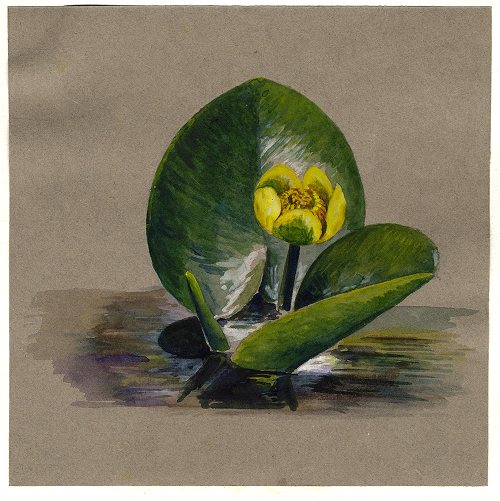
“Yellow water-lily. Pools in Camperdown Woods. Nuphar lutea (Nymphæaceaæ) July 19, 1913”. Detail from Illustrations of Scottish Flora (1912-1913) by David R Robinson. From the Kinnear Collection, reference GB 0254 MS 103/3/5. Photograph copyright © University of Dundee Archive Services.
Feature: Botany – botany and botanists (March 2005).
Dee and Clwyd River Authority records (1653-1979) 1544 items. In 1965, the Dee and Clwyd River Authority was constituted, superseding the numerous earlier authorities concerned with the navigation of the Dee Estuary and the drainage of low-lying coastal and estuarial land. The construction of a navigable cut from Chester to Connah’s Quay had been empowered by an Act of 1732, to replace the old deep-water channel to the north of the estuary, and in 1740 the River Dee Company was created to maintain the navigation. The Dee Conservancy Act 1889 established the Dee Conservancy Board, taking over the Company’s functions. In 1938, the Conservancy Board officially came to an end. Material held by North East Wales Archives – Flintshire / Archifau Gogledd Ddwyrain Cymru – Sir y Fflint – see full collection description.
Online Resource: Freeze Frame. The collection will be of interest to anyone studying or teaching the arts as examples of landscape, portrait and historical photography. There are images related to the environment, wildlife and travel. Themes such as ‘History of Photography in the Polar Regions’, Changing Britain and the Heroic Age’ and ‘Surviving in Extreme Environments’ can all be explored within this collection. The resource includes 20,000 images, biographies, photographs, still images and text. Provided by Scott Polar Research Institute, University of Cambridge: https://archiveshub.jisc.ac.uk/data/gbah17-freezeframe.
Meteorological Office Archive (Mid-19th Century – 2010): as a result of the Brussels Conference of Maritime Nations in 1853 and following consultations by the Board of Trade with the Royal Society, a Meteorological Department was formed at the beginning of August 1854 for the collection and co-ordination of meteorological observations made at sea. The National Meteorological Archive is the official UK Place of Deposit for meteorological records. It is home to one of the most comprehensive collections on meteorology anywhere in the world and provides a major resource for scientific and historical research of international scope. Their aim is to support the Met Office and the wider scientific community by providing a targeted, proactive and flexible information service; their primary role is to preserve the public memory of the weather and to conserve the records in their care. The collection comprises around 500,000 meteorological records stored across four large, environmentally controlled strongrooms. See full collection description.
Online Resource: GB3D Type Fossils (Lower, Middle and Upper Palaeolithic; Early Neolithic). This collection currently holds examples of macrofossil types found in the UK, and will develop in future to include examples from collections based around the world. The study of fossils provides insight into the Earth’s history, how creatures evolved, continents separated and environments changed across vast periods of time. Fossil types available to view in the database include ammonites, belemnites, fish, corals and trilobites. Institutions who have contributed to the database include the Sedgwick Museum, Oxford University, National Museum of Wales, Geological Curator’ Group and the collection’s publishers – British Geological Survey: https://archiveshub.jisc.ac.uk/data/gbah2-h2-gb3dtypefossils.
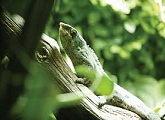
Chameleon: photograph of vivarium in The Manchester Museum, copyright © The University of Manchester.
Feature: Charles Darwin and Evolution (February 2009).
Find out more
Follow us on Twitter @archiveshub and on Facebook
Join our mailing list: to receive updates about what is on the Hub and tips for using archives in your research, please visit our jiscmail list to sign up.
Information on how to search the Archives Hub: https://archiveshub.jisc.ac.uk/using/.
User Survey 2021: whether you’re a new user or have used the Archives Hub for years, we’d really appreciate your feedback to help us develop the service!
If you use the Archives Hub for work / study, please complete our quick survey at https://jisc.onlinesurveys.ac.uk/ahw21
Or if you use the Hub for personal research, please go to https://jisc.onlinesurveys.ac.uk/ahp21
Thank you for your time. Your feedback is much appreciated!
